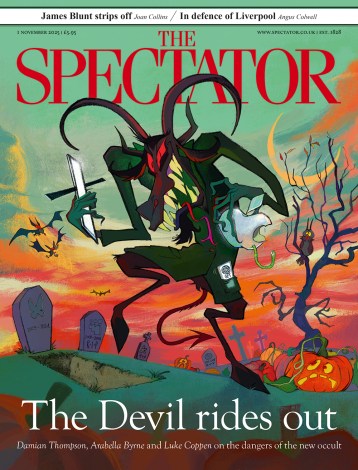The national Covid-19 inquiry rumbles slowly onwards. Module 8, examining the impact of the pandemic on children and young people, drew to a close last month. Blast-from-the-past appearances from Matt Hancock and Boris Johnson meant the decision to shut schools and stop exams from going ahead for the best part of two years was subjected to scrutiny and buck-passing in equal measure.
Since lockdown ended, concern has, rightly, been raised about so-called ‘ghost children’, who continue to be persistently absent from school rolls. Far less attention has been paid to the gaps in the education of those pupils who did turn up when schools reopened. Perhaps understandably, no one wants to be seen to undermine the efforts of hard-working children and teachers. Yet rather than owning up to the hard truth that schools could not close for extended periods without education suffering, learning loss was disguised with grade inflation. When exams resumed, the number of assessed topics was reduced, students were allowed to use ‘crib sheets’, and marking was more generous.
Teachers should be able to take for granted that secondary school pupils can read fluently
The upshot was that during this period of disruption and time away from the classroom, the proportion of GCSE entries awarded the top grades (level 5 and above) actually rose from 53.5 per cent in 2019 to an astonishing 62.8 per cent in 2021 when exams were replaced by teacher assessment. And when schools reopened and exams returned, grades remained substantially higher than pre-pandemic levels; in 2022, 60.3 per cent of entries received top grades. Since this time, exam results in England have slowly come back down (they were inflated higher, and for longer, in Scotland and Wales). This summer, 55 per cent of exam entries in England hit the level 5 and above sweet spot – down from the 2021 peak but still above 2019 levels, even though this year’s 16-year-olds missed large chunks of schooling when they transitioned from primary to secondary school.
While it would clearly be unfair to penalise children for circumstances that were entirely outside of their control, we need to recognise that grade inflation has prevented an honest reckoning with the educational damage wrought by lockdown. Other measures of pupil attainment, such as PISA (Programme for International Student Assessment) scores that evaluate the performance of 15-year-olds in maths and reading, show a marked decline, suggesting that rising GCSE grades have masked falling attainment.
Sadly, as I highlight in a newly published report for the think tank Civitas, there is little new in this pattern. For all but one of the past four decades, British education has been characterised by this same combination of rising grades and falling standards. With the abolition of O Levels and the introduction of GCSEs in 1986, an exam intended to prepare an academic elite for higher-level study was replaced by a more general school-leaving certificate designed to be accessible to all teenagers. Content was cut and diluted in the pursuit of inclusivity. In some subjects, such as English, exams were scrapped altogether and replaced by coursework.
Since then, exam boards have folded or merged, coursework has come in and out of fashion, new grading systems have been introduced, and curricula and syllabi have been through multiple iterations. Teachers were drilled in getting pupils to jump through assessment hoops, and schools learnt to game the system by opting for exam boards perceived to be more lenient and by pushing mediocre pupils towards easier subject choices. As a result, despite children having to grapple with far less – and far easier – content, exam results increased rapidly. In 1988, 41.9 per cent of GCSE entries were graded A*-C; by 2008, this figure stood at 65.7 per cent, and by 2012, just four years later, it had increased again to 69.4 per cent.
And then something changed. From 2010, Michael Gove, as education secretary, and Nick Gibb, as schools minister, managed to put a stop to rampant grade inflation. As Gibb outlines in his excellent book Reforming Lessons (co-authored with Robert Peal), the combination of a more rigorous curriculum, a return to final exams, and an end to schools gaming the system to the detriment of pupils, all led to rising standards. Government-backed changes were given momentum by influential teachers who rejected pedagogic pseudo-science and progressive doctrine in favour of evidence-based practice.
Unfortunately for pupils, Gove’s tenure as education secretary came to an abrupt end in David Cameron’s July 2014 cabinet reshuffle. Gibb managed to remain in post, on and off, until he resigned his role and announced his departure from parliament in November 2023. Yet lockdown school closures show that the temptation to revert to masking lowered standards with grade inflation persists. It remains to be seen whether Labour’s Education Secretary Bridget Phillipson can challenge this trend.
Phillipson’s proposal in September for children to sit a reading test at age 13 unintentionally reveals the extent to which standards have fallen over the long term. Teachers should be able to take for granted that secondary school pupils can read fluently. Yet the opposition to the additional test from some headteachers and union leaders shows that, despite the best efforts of Gove and Gibb, the progressive education-establishment blob was not completely vanquished. High standards still need defending.
Joanna’s paper, In Defence of Standards is published by Civitas today.








Comments